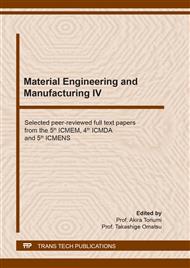p.139
p.145
p.151
p.159
p.166
p.173
p.181
p.188
p.198
Creep Parameters Determination by Omega Model to Norton Bailey Law by Regression Analysis for Austenitic Steel SS-304
Abstract:
In the material’s creep failure analysis, the difficulty of assessing the applied thermo-mechanical boundary conditions makes it critically important. Numerous creep laws have been established over the years to predict the creep deformation, damage evolution and rupture of the materials subjected to creep phenomena. The omega model developed by the American Petroleum Institute and Material Properties Council is one of the most commonly used creep material models for numerical analysis over the years. It is good in defining the fitness of mechanical equipment for service engineering evaluation to ensure the reliable service life of the equipment. The Omega model, however, is not readily accessible and specifically incorporated for creep evaluation in FEA software codes and creep data is always scarce for the complete analysis. Therefore, extrapolation of creep behavior was performed by fitting various types of creep models with a limited amount of creep data and then simulating them, beyond the available data points. In conjunction with the Norton Bailey model, based on API-579/ASME FFS-1 standards, a curve fitting technique was employed called regression analysis. From the MPC project omega model, different creep strain rates were obtained based on material, stress and temperature-dependent data. In addition, as the strain rates increased exponentially with the increase in stresses, regression analysis was used for predicting creep parameters, that can curve fit the data into the embedded Norton Bailey model. The uncertainties in extrapolations and material constants has highlighted to necessitate conservative safety factors for design requirement. In this case study, FEA creep assessment was performed on the material SS-304 dog bone specimen, considered as a material coupon to predict time-dependent plastic deformation along with creep behavior at elevated temperatures and under constant stresses. The results indicated that the specimen underwent secondary creep deformation for most of the period.
Info:
Periodical:
Pages:
188-197
Citation:
Online since:
September 2021
Keywords:
Price:
Сopyright:
© 2021 Trans Tech Publications Ltd. All Rights Reserved
Share:
Citation:


